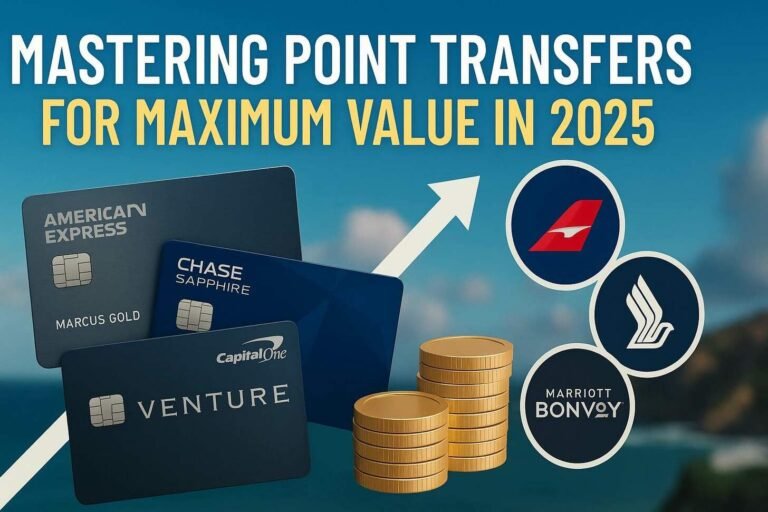Affiliate Disclosure: Award Travel Hub may earn a commission or referral bonus from some links on this site. These affiliate links help support our work and may influence the placement or promotion of certain products or services. However, our content is independently crafted to reflect honest opinions. Not all offers or products are included. There is no additional cost to users when they utilize our affiliate links.
Did you know that strategic credit card management could potentially unlock over $1,000 in travel benefits and cash back rewards annually? That’s the power of a well-executed rewards strategy.
This approach involves opening accounts specifically to earn sign-up bonuses. It requires careful planning and financial discipline. The landscape has evolved significantly, with issuers implementing new policies.
We’ll explore how this method can help you accumulate points and miles faster than traditional use. However, it demands a strong financial profile and organizational commitment.
Understanding the current rules is crucial for success. We’re here to provide transparent guidance for navigating this complex but rewarding territory.
Key Takeaways
- Strategic account opening can significantly boost your rewards-earning potential.
- Current issuer policies require careful attention to avoid penalties
- This approach demands excellent financial discipline and organization
- Understanding your credit profile is essential before beginning
- Proper planning helps maximize benefits while minimizing risks
- Regular monitoring of your accounts and spending is crucial
- This strategy works best when aligned with your financial goals
Introduction to the World of Card Churning
Many travelers are discovering that a strategic approach to credit applications can unlock substantial rewards beyond traditional methods. This practice has transformed how people think about maximizing their financial benefits.
What is Card Churning?
We define this strategy as systematically opening new accounts to capture valuable sign-up incentives. People pursue these offers to accumulate rewards more efficiently than through everyday spending alone.
The process involves identifying cards with generous welcome bonuses, meeting spending requirements through planned purchases, and managing accounts strategically. Successful practitioners often cancel or downgrade accounts before the annual fee applies.

Why It’s Gaining Popularity
This approach has gained significant traction for several reasons. Increased competition among financial institutions has led to more attractive offers. Online communities share knowledge, making advanced strategies accessible to more people.
Economic pressures have also driven interest in maximizing financial benefits. Many seek ways to offset rising costs through strategic financial management.
| Traditional Approach | Strategic Approach | Potential Benefit |
|---|---|---|
| Maintain 1-2 accounts long-term | Cycle through multiple accounts | 5-10x more rewards |
| Slow rewards accumulation | Fast bonus acquisition | Multiple free trips annually |
| Basic financial management | Advanced planning required | Substantial cash back |
This method requires careful financial discipline but offers significant advantages for those who manage it effectively. The key is understanding both the opportunities and responsibilities involved.
The Evolution of Credit Card Churning
The landscape of strategic account acquisition has transformed dramatically over the past decade. We’ve witnessed significant shifts in how financial institutions approach reward programs.
Historical Perspective and Changing Trends
In the early days, signup bonuses were exceptionally generous with minimal restrictions. This period allowed enthusiasts to maximize returns with relative ease. The approach was straightforward and highly accessible.

Financial institutions gradually recognized the financial impact of serial applicants. They began implementing stricter policies to encourage long-term relationships. This marked a turning point in how rewards programs were structured.
How 2025 Differs from Earlier Years
Today’s environment features sophisticated monitoring through advanced algorithms. Issuers now employ real-time application tracking and stricter eligibility windows. The emphasis has shifted toward sustainable customer relationships.
Despite increased restrictions, strategic account management remains viable for informed applicants. Success now requires careful planning and understanding of specific policies. The community has adapted with sophisticated tracking tools and shared knowledge.
| Era | Bonus Availability | Application Flexibility | Monitoring Level |
|---|---|---|---|
| Early Years (pre-2015) | Highly Generous | Maximum | Basic |
| Transition Period (2016-2020) | Moderate | Limited | Enhanced |
| Current Environment | Strategic | Restricted | Advanced |
The practice continues to evolve as both institutions and applicants refine their approaches. Understanding this progression helps inform better decision-making for future planning.
Understanding the Updated Rules from Credit Card Issuers
Mastering the art of strategic account opening means decoding the unwritten policies of major lenders. These guidelines shape how we approach new applications and bonus opportunities.
Issuer Policies: Chase, American Express, and More
Each financial institution has its own approval criteria. Chase applies its famous 5/24 policy, automatically denying applications if you’ve opened 5 or more personal cards within 24 months.
American Express maintains a strict “once per lifetime” bonus policy per product. Once you’ve received a welcome offer on a specific card, you cannot earn it again, even after closing the account.
Bank of America follows an unpublished 2/3/4 velocity rule. This limits approvals to 2 cards per 2 months, 3 per year, and 4 per 24-month period.
Key Rules Impacting New Applications
Citibank enforces a 48-month waiting period for most bonuses. After receiving a signup incentive, you must wait four years before becoming eligible again.
Capital One takes a conservative approach, limiting users to two personal cards at a time. Their approval process favors applicants with limited recent applications.
We recommend tracking your application history meticulously. Understanding these patterns helps optimize your strategy while maintaining good standing with all financial institutions.
Card Churning in 2025: Updated Rules, Risks & Return on Spend
Successful financial optimization now demands understanding the delicate balance between opportunity and responsibility. We’ve covered the essential rules from major issuers. Now we transition to the core strategic framework.
“The wisest financial strategies maximize returns while minimizing exposure to unnecessary risks.”
Effective rewards accumulation hinges on three interconnected pillars. Each requires careful attention for sustainable success.
First, navigating complex application policies prevents wasted efforts. Second, managing personal financial health ensures long-term viability. Third, optimizing actual value from regular purchases creates genuine benefits.
| Strategic Element | Primary Focus | Key Consideration |
|---|---|---|
| Rules Navigation | Application Timing | Issuer-specific restrictions |
| Risk Management | Financial Health | Credit profile protection |
| Return Optimization | Value Maximization | Spending efficiency |
The actual value comes from earning exceptional returns on necessary expenses. This approach avoids generating artificial spending to meet thresholds.
Upcoming sections provide actionable frameworks for minimizing risks while maximizing rewards. We’ll explore the impacts on credit, debt management, and timing strategies.
Our guidance remains transparent and data-driven. We empower you to make decisions aligned with your specific financial goals and travel aspirations.
Navigating the Risks of Card Churning
Let’s address the elephant in the room: the potential downsides of this rewards strategy. While the benefits are significant, understanding the pitfalls is crucial for long-term success. We believe in transparent guidance to help you make informed decisions.
Awareness is your first line of defense against common financial missteps. We’ll break down the key areas where vigilance pays off.
Potential Credit Score Impacts
Your credit score can be affected by rapid account openings. Each application triggers a hard inquiry, which may temporarily lower your score.
Your credit utilization ratio is another critical factor. Opening new accounts increases your total available credit, which can help. However, spending heavily to meet bonuses can spike your utilization and hurt your score.
Finally, the average age of your accounts matters. Frequently opening and closing cards shortens your history. This can suggest less experience to lenders.
Management of Debt and Interest Challenges
The biggest financial risk is the accumulation of debt. Carrying a balance to meet spending requirements defeats the purpose. High interest rates can quickly erase any rewards earned.
Paying your balance in full each month is non-negotiable. This avoids interest charges and protects your financial health. It also prevents falling into a cycle of credit card debt.
If you plan to apply for a major loan, like a mortgage, pause this activity. Lenders prefer to see stability in your credit report.
| Risk Factor | Short-Term Impact | Long-Term Strategy |
|---|---|---|
| Hard Inquiries | Temporary score dip | Space out applications |
| Credit Utilization | Score fluctuation | Pay balances promptly |
| Account Age | Reduces average history | Keep older accounts open |
| Accrued Interest | Eliminates reward value | Always pay in full |
Strategic Approaches to Maximize Rewards
The true art of rewards optimization lies in strategic planning around your natural spending patterns. We help you transform everyday expenses into valuable bonus opportunities.
Smart planning ensures you meet requirements without artificial spending. This approach protects your budget while maximizing returns.
Optimizing Signup Bonuses and Spending Requirements
Focus on offers with the highest return relative to spending thresholds. A $200 cash-back bonus for $500 in spend delivers better value than larger offers that require excessive spending.
Transferable points currencies often provide 1.5-2x more value than fixed cash back. Prioritize these for travel-focused strategies.
Track every application date and bonus deadline meticulously. Organization prevents missed opportunities and fee payments.
Timing and Strategic Applications
Align applications with planned major purchases. Holiday shopping, home repairs, or tax payments can naturally help meet requirements.
Experienced churners often apply for multiple accounts simultaneously. This strategy minimizes the impact of credit inquiries across reporting cycles.
Wait 3-6 months between application cycles. This pacing maintains good standing with all financial institutions while maximizing annual bonus potential.
Managing Credit Applications and Score Impacts
Your credit score represents a vital component of your financial health when pursuing bonus opportunities. We believe in transparent guidance about how applications affect your financial profile.
Understanding Hard Inquiries and Utilization Ratios
Each application triggers a hard inquiry when an issuer checks your report. This typically lowers your credit score by 2-5 points temporarily. The impact lessens after several months.
Multiple applications in a short period can suggest financial stress. For example, 5-10 inquiries annually might cumulatively reduce your score by 20-40 points.
Your credit utilization ratio measures your balances relative to your total limits. Opening new accounts increases available credit, which can help improve this ratio if you manage spending responsibly.
We recommend spacing out applications strategically. This approach minimizes the impact on your credit score while maximizing benefits.
Monitoring tools like Credit Karma provide real-time insights. They show how each decision affects your financial profile, helping you stay informed.
Tools and Tips for Staying Organized
Successfully juggling multiple accounts requires a meticulous system. Without it, deadlines are easily missed, leading to lost bonuses or unwanted fees. We believe a solid organizational framework is the bedrock of a profitable strategy.
This careful approach saves valuable time and protects your financial standing.
Using Tracking Tools and Software
Specialized software transforms complex tracking into a manageable process. These tools automate deadline monitoring and spending progress.
For example, AwardWallet consolidates points balances across numerous loyalty programs. Travel Freely provides application tracking and countdowns for spending. MaxRewards analyzes your patterns to recommend the best account for each purchase.
We recommend creating a personal spreadsheet. It should track application dates, bonus details, spending deadlines, and annual fee dates.
Establishing Payment Reminders and Deadlines
Avoiding missed payment due dates is non-negotiable. Set up a layered reminder system using multiple channels.
Calendar alerts seven days before payments are due provide a crucial safety net. Schedule reminders 30 days before spending deadlines. This gives you ample time to adjust your strategy if needed.
Consider a separate email folder for all account communications. This prevents important notices from getting lost in a cluttered inbox.
| Tool Category | Primary Function | Benefit |
|---|---|---|
| Dedicated Apps | Automated Tracking | Real-time Progress |
| Spreadsheet | Custom Data Log | Complete Overview |
| Calendar Alerts | Deadline Reminders | Prevent Missed Dates |
“Organization turns chaos into clarity, transforming overwhelming data into an actionable plan.”
Plan to dedicate a few hours each month to review your portfolio. This regular check-in ensures your activities remain aligned with your goals.
Managing several cards demands attention, but the right tools make it sustainable. This systematic approach separates successful rewards optimization from costly errors.
Handling Annual Fees, Payment Deadlines, and Interest
One of the most overlooked aspects of rewards optimization involves managing recurring costs effectively. We help you navigate the financial responsibilities that come with premium accounts.
Proper financial management ensures avoidable expenses don’t erode your hard-earned rewards. Let’s explore practical strategies for maintaining profitability.
Avoiding Unnecessary Fees
High-value signup bonuses often come with substantial annual fees. These costs range from $95 to $550 for premium products.
We recommend setting calendar reminders 60 days before your account anniversary. This gives you time to evaluate whether ongoing benefits justify the fee.
Consider product-changing to no-fee versions when benefits no longer match your spending patterns. Many issuers offer retention offers if you call before the annual fee posts.
Strategies to Prevent Costly Interest Charges
The most critical rule is paying statement balances in full each month. Carrying balances defeats the purpose of reward accumulation.
Average interest rates around 20-25% APR can quickly erase any bonus value. A $3,000 balance over one year could cost $660 in interest charges.
We suggest setting up automatic payments from a dedicated account. Understanding the difference between your statement closing dates and payment due dates helps you maximize grace periods.
- Pay balances weekly to maintain low utilization
- Track rewards expiration dates for airline and hotel points
- Always prioritize interest avoidance over bonus maximization
This disciplined approach protects your cash rewards and maintains financial health. Proper planning turns potential costs into sustainable benefits.
Conclusion
Before embarking on this financial optimization path, we encourage you to evaluate whether your current habits align with the demands of advanced rewards strategies. This approach represents a sophisticated way to generate substantial value through strategic account management.
The ideal profile for successful churners includes excellent credit, stable income, and zero existing debt. Strong organizational skills and payment discipline are non-negotiable requirements for this strategy.
If you’re carrying balances or planning major loans, focus on financial health first. For those ready, start gradually with one or two cards offering generous rewards.
Remember this is a marathon, not a sprint. The landscape constantly evolves, requiring ongoing learning and adaptation.
We’re committed to providing transparent guidance as you navigate your financial journey. Whether you pursue full-scale optimization or moderate strategic openings, our goal remains your informed success.






